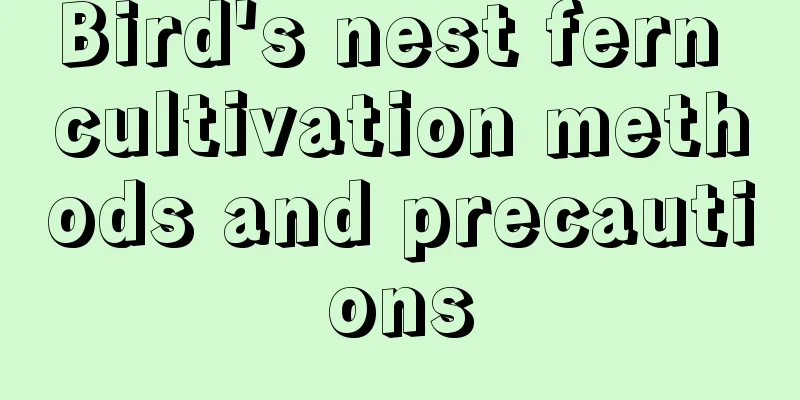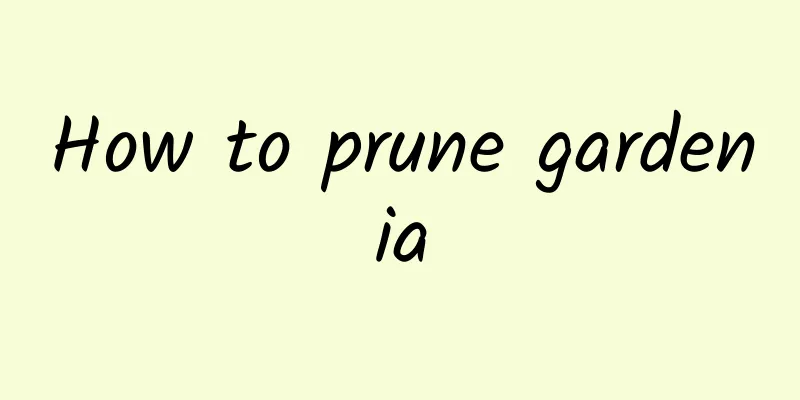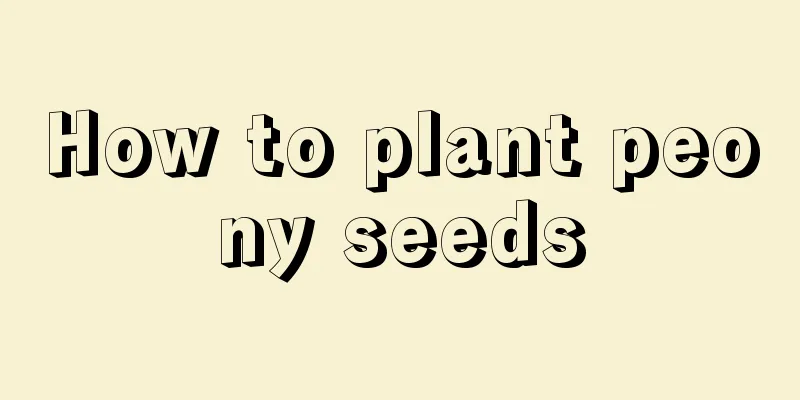Bird's nest fern cultivation methods and precautions

1. Maintenance methods1. Temperature: 16 to 27 degrees is most suitable for the growth of bird's nest fern. Too much heat or too much cold can be harmful to it. Therefore, try not to keep the temperature above 30 degrees in summer, otherwise its growth will slow down. In winter, try to keep the temperature around ten degrees. 2. Light: Wild bird's nest ferns grow in relatively shady places, so they do not require much light. Because, under normal circumstances, you can put it in a semi-shaded place. As long as there is a little astigmatism, it can meet its growth requirements. In summer, the shading degree needs to be controlled at about 70%, and there must be no strong light. 3. Watering: Bird's nest fern likes moisture very much, and a humid environment is suitable for its growth. When it grows fast, the substrate needs to be kept moist at all times. In winter, although its water requirement is reduced, it cannot be completely stopped. Spraying water can also be used instead of watering. 4. Fertilization: When the plant is growing fast, fertilize once every half a month, using mostly compound fertilizer. In extremely cold or hot weather, fertilization should be suspended. 2. Breeding techniques1. Repot; try to do it once a year. Take place in spring. You can choose leaf mold or peat soil, and add vermiculite, river sand, etc. Humus soil also works well. After choosing, remove the plant from the pot, repair the root system as needed, then replace the soil with new one and put the plant back into the pot. 2. Reproduction: Division is commonly used. Do it in mid or late April. A plant with vigorous growth should be used as the mother plant. When dividing the plants, do not divide the plants in too many quantities, and each plant should have enough roots. Leaf mold can be used as a substrate. After planting, keep the temperature at around 25 degrees and not too humid, otherwise the roots will rot easily. 3. Problem diagnosis and treatment1. Disease: Anthracnose often occurs, especially in summer. The leaves are mostly affected and some spots will appear. Methyl thiophanate can be used for prevention and control, once every ten days, for three to four times. 2. Pests: Mainly "nematodes", which can also cause some spots on the leaves. They can be controlled with furadan and other drugs. IV. Other issues1. Toxicity: It is non-toxic and has very high purification properties. 2. Can it be raised at home?: Doing so has many benefits, so it is more appropriate. It not only purifies the air, but is also an ornamental plant. |
<<: A complete guide to the cultivation methods and precautions of Araucaria
>>: The growth process of a tree
Recommend
Disease and Pest Control of Dendrobium primulatum
Types of pests and diseases Let’s talk about soot...
What fertilizer should be used for bougainvillea? Is the fertilizer buried directly in the soil?
1. What fertilizer to apply 1. When bougainvillea...
Can wolfsbane be planted in pots?
Can wolfsbane be planted in pots? Wolfsbane can b...
The growing environment and local conditions of shiitake mushrooms
Shiitake mushroom growth environment and conditio...
The difference between yellow eggplant and thorny eggplant
1. Difference of blades The leaves of Solanum eri...
What does a green radish seedling look like? How to transplant a green radish seedling
1. Seedling morphology The appearance of the youn...
When is ginger harvested? What month is the harvest season?
Ginger Harvest Time 1. Harvesting young ginger: Y...
How to grow spider plants more vigorously
1. Suitable soil Chlorophytum has low requirement...
How to grow the broken bowl flower
1. Maintain the environment 1. Soil: When plantin...
Maintenance and management of rose potted plants at different stages
Rose potting management For seedlings grown in co...
How to propagate peach by grafting
Selection of scion and rootstock Generally speaki...
How to water mint and how much water is appropriate for maintenance
Mint Watering Overview Mint likes warm and humid ...
How to grow worry-free flowers
1. Maintenance methods 1. Temperature: It has ver...
Can the horse hoof gold be hydroponically cultivated?
Can Dichondra chinensis be hydroponically cultiva...
How to store and handle osmanthus flowers, and how to preserve the picked osmanthus flowers
1. Treatment methods Fresh osmanthus flowers must...









